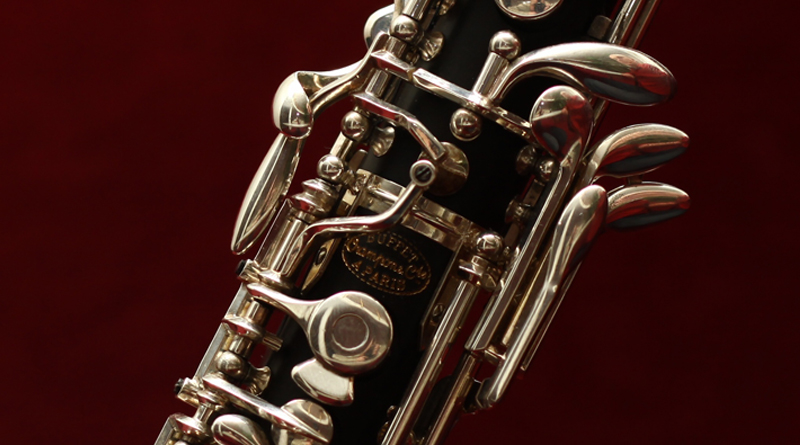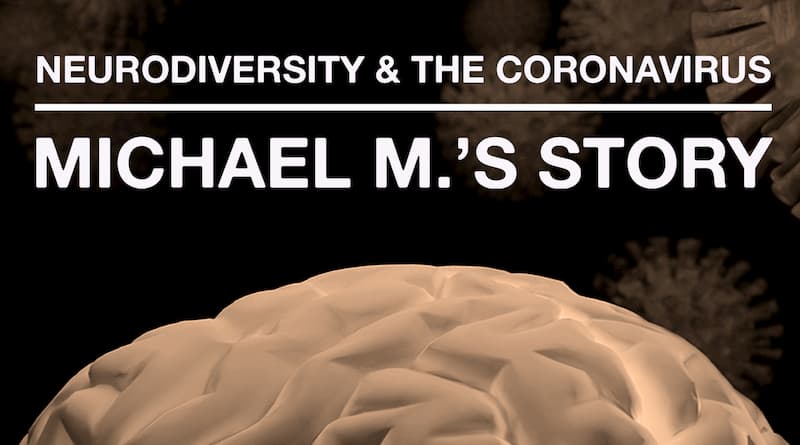
Misophonia At A Glance
By Michael A. Tollefsrud
Life With Misophonia: Prologue
Sitting in class in the middle of a lecture, you smell it before you hear it. Discreetly looking to your left, you notice the girl sitting next to you has pulled out a pack of gum. You quickly turn back to the front, forcefully pushing your earplugs deeper as you brace for what is to come next. “SMACK! SMACK! SMACK!”
“Really? Not even going to attempt to keep your mouth closed, huh? Jerk!” you yell in your head as each chomp on her gum hits you like a slap in the face, evoking the all too familiar anger.
“CRUNCH”
Two rows down and to the left, you spot a guy crunching on some crackers.
“Oh, and now this guy, huh? Great! How is he still hungry? Lunch was 30 minutes ago! Why is it so hard for people to eat with their mouths closed!”.
While the guy finishes his snack quickly, the girl spends the entire class chomping and popping her gum. You manage to keep yourself composed and get the gist of what the teacher says, the effort draining you completely. As the bell rings and you gather your stuff, you step into the hall, preparing to do it all over again.
What Is Misophonia?
Misophonia is a condition characterized by extremely aversive emotional reactions to specific sounds, most commonly associated with eating (Schröder et al., 2017). Initially described as “selective sound sensitivity syndrome” (“4S”) by audiologist Marsha Johnson in the 1990s (Dozier, 2015), the more popular term “Misophonia” was later ascribed to the condition by audiologists Pawel & Margaret Jastreboff in 2001 (Taylor, 2017).
Quick facts
- Symptoms typically appear at age 11, though it can manifest anytime (Cavanna & Seri, 2015).
- Symptoms typically begin focused on a close family member and then generalize to other people and contexts (Partridge, 2017)
- Symptoms are typically more intense with close family members (Sanchez & Silva, 2017)
- Misophonics are not bothered by sounds that they make themselves (Johnson et al., 2013).
- Misophonia is not currently recognized as a disorder in the DSM-5 or ICD-10 due in part to issues surrounding diagnosing and classifying it (McErlean & Banissy, 2018).
Management: Limited evidence supports the effectiveness of the following types of symptom management:
- Modified tinnitus retraining therapy (Cavanna & Seri, 2015; Schneider & Arch, 2017)
- Mindfulness and acceptance-based strategies (Schneider & Arch, 2017).
- Various forms of Cognitive behavioral therapy (CBT) (Altınöz et al., 2018; McGuire et al., 2015; Schneider & Arch, 2017; Schröder et al., 2017)
Life With Misophonia: Discovery
“Misophonia?”
You blink disbelievingly at the search results. After six years and hours of therapy, you finally have a better name for it than “my sound problem.” On a whim, you had googled the symptoms of “your sound problem,” not expecting to find much, if anything. You certainly were not expecting to find that it has a name… and you are not alone.
You feel a rush of relief and vindication, YOU AREN’T CRAZY! Or at the very least, others share in your insanity. Name in tow; you spend the next few hours scouring the internet for any information you can find. Blog posts, articles, even a few research papers; for the first time, you do not feel alone, and you have hope.
Beyond the comfort of support groups and reading stories of people like you, you find little useful information at first. The term “Misophonia” is relatively new, so the research is still young, and the few studies you do find do not seem all that helpful. Still, you are determined to find out all you can.
Misophonic Triggers and Common Terminology
The term “trigger” is often used by Misophonics and researchers to describe any stimuli that evoke symptoms. Triggers can be defined as falling into one of two categories, “auditory” and “visual.”
Auditory triggers
- The sounds that cause distress in Misophonics
- The most common trigger type and the inspiration for the name (“Miso”- “Phonia” = “hatred of sound.”
- Can include any low level and repetitive sound but are typically sounds generated by the mouths of other people (Sanchez & Silva, 2017).
- Typically include: crunching, slurping, popping gum, lip-smacking, sniffing, throat clearing, and heavy breathing (Taylor, 2017).
- Less commonly include: the sounds of automobiles and planes, general mechanical sounds (ex: clanking, tapping), and animal sounds (Cavanna & Seri, 2015).
Visual triggers
- The sights that cause distress in Misophonics.
- Tend to be associated with an auditory source. Ex: sight of someone’s mouth moving as they eat or chew (Taylor, 2017). Assumed to be a result of classically conditioned pairing with associated sounds (Dozier, 2015).
Misophonic Response
The term “Misophonic response” (AKA “Misophonic Reaction”) is used to describe how a Misophonic reacts to triggers (Johnson et al., 2013). Misophonic responses can be described as falling into one of three categories:
Behavioral Responses
- The physical actions a Misophonic makes in response to trigger exposure
- The most common include attempts at avoidance or escape, the use of masking methods such as earplugs, (typically) nonviolent attempts to halt the trigger, and mimicking the trigger (Schneider & Arch, 2017; Taylor, 2017).
- Play a significant role in reinforcing the condition, as continued attempts to avoid triggers likely acts to reinforce the reactions as it coincides with an increase in trigger types and response intensity. (Schneider & Arch, 2017).
Emotional Responses
- The subjective feelings experienced by a Misophonic in response to triggers
- The most defining feature of the condition
- Typically include: intense feelings of fear, anger, anxiety, disgust, and or a general feeling of being overwhelmed (Schröder et al., 2017).
Physiological Responses
- The physical manifestations of trigger exposure.
- Can include: tightness and or pain in the chest, arms, head, or whole body; increased muscular tone, increased sweating, difficult/labored breathing, rapid heart rate, high blood pressure, and increased body temperature (Cavanna & Seri, 2015).
Life With Misophonia: Why?
It is a question you have asked yourself multiple times a day for as long as you can remember. “Why?” Why do these sounds upset you so much? Why these specific sounds? … why you?
Of course, you never thought of these as genuine questions that may have answers. They were more like a mantra of exasperation, like asking “why?” when your car breaks down. But knowing now that it has a name and you are not alone, this mantra morphs into sincere questions. For the first time in memory, you believe there might be an answer, a “why” to it all. Wading through anecdotal accounts, small sample case studies, and the occasional scam, you start to find some answers. But as the answers to “why” start to stack up, a new question emerges… “which one is right?”
Current Explanations of Misophonia
Cognitive explanations: These explanations generally see Misophonia as the result of maladaptive patterns of thought or the result of other cognitive processes. The most prevalent of these propose that Misophonia is the result of classical conditioning, where Misophonia is thought to initially manifest during a period of heightened stress. During this time, specific stimuli (i.e., sounds) get paired with the feelings of distress and form an association that is later reinforced through avoidant behaviors (responses) (Dozier, 2015; Partridge, 2017).
Neurological explanations: These explanations generally see Misophonia as a result of neurological issues. For example, increased connectivity between the auditory cortex and limbic regions is often blamed for the increased emotional responses characteristic in Misophonia (Kumar et al., 2017; Schröder et al., 2017). However, as this explanation does not account for the sensitivity to repetitive motion found in visual triggers, neurobiological mechanisms similar to those in OCD may be at fault (Johnson et al., 2013).
Misophonia is a symptom of another condition: These explanations see Misophonia not as a disorder in itself, but as a specialized symptom of existing disorders. Currently, OCD is the most commonly suggested and supported explanatory disorder. This support comes from several studies finding links between the two conditions, including a tendency for OCD symptoms to increase with Misophonia symptoms (Cavanna & Seri, 2015; Erfanian et al., 2018; McKay et al., 2018). Such explanations are hotly contested, however, due to several symptomological differences between Misophonia and all proposed explanatory disorders.
Looking Forward
From the establishment of research networks and centers (ex: International Misophonia Research Network, the Duke Center for Misophonia and Emotion Regulation), to a televised (but woefully inadequate) episode of “Dr. Phil,” Misophonia has steadily gained the attention of the scientific community and the public at large over the last few years. Simultaneously, a great deal of progress has been made in describing Misophonia and its symptoms, and a few management methods and possible explanations have been proposed. Despite these advances, there remain many more questions to be answered regarding this condition.
- What mechanism(s) control symptoms?
- Why do symptoms start?
- Why are these specific sounds triggering while other sounds are not?
- Is there a genetic component to Misophonia?
- What is the best treatment method(s)?
Life With Misophonia: What Now?
It took less time than you would have thought to get through all the existing research, and you could not help but feel a little disappointed. Sure, you found several compelling explanations and a few potential treatments, but that is the problem… “Several.” Every question seems to have several answers, with some answers adding even more questions to the pile. There is a lot of work that needs to be done to understand this beast, let alone treat it. But the work has started, and the fact that you have front row seats to watch the development of this field provides some comfort. Who knows, you might even be able to help.
Works cited:
Altınöz, A. E., Ünal, N. E., & Tosun Altınöz, Ş. (2018). The effectiveness of Cognitive Behavioral Psychotherapy in Misophonia: A Case Report. Journal of Clinical Psychiatry, 21(4), 414–417. https://doi.org/10.5505/kpd.2018.18480
Cavanna, A. E., & Seri, S. (2015). Misophonia: Current perspectives. Neuropsychiatric Disease and Treatment, 2117. https://doi.org/10.2147/NDT.S81438
Dozier, T. H. (2015). Etiology, Composition, Development and Maintenance of Misophonia: A Conditioned Aversive Reflex Disorder. Psychological Thought, 8(1), 114–129. https://doi.org/10.5964/psyct.v8i1.132
Erfanian, M., Brout, J., & Keshavarz, A. (2018). MISOPHONIA, EMOTIONAL DYSREGULATION AND AFFECTIVE DISORDERS: A PRELIMINARY STUDY. European Neuropsychopharmacology, 28(6), 771–772. https://doi.org/10.1016/j.euroneuro.2017.10.014
Johnson, P. L., Webber, T. A., Wu, M. S., Lewin, A. B., Murphy, T. K., & Storch, E. A. (2013). When selective audiovisual stimuli become unbearable: A case series on pediatric misophonia. Neuropsychiatry, 3(6), 569–575. https://doi.org/10.2217/npy.13.70
Kumar, S., Tansley-Hancock, O., Sedley, W., Winston, J. S., Callaghan, M. F., Allen, M., Cope, T. E., Gander, P. E., Bamiou, D.-E., & Griffiths, T. D. (2017). The Brain Basis for Misophonia. Current Biology, 27(4), 527–533. https://doi.org/10.1016/j.cub.2016.12.048
McErlean, A., & Banissy, M. (2018). Increased misophonia in self-reported Autonomous Sensory Meridian Response. PeerJ, 6, e5351. https://doi.org/10.7717/peerj.5351
McGuire, J. F., Wu, M. S., & Storch, E. A. (2015). Cognitive-Behavioral Therapy for 2 Youths With Misophonia: (Case Report). The Journal of Clinical Psychiatry, 76(05), 573–574. https://doi.org/10.4088/JCP.14cr09343
McKay, D., Kim, S.-K., Mancusi, L., Storch, E. A., & Spankovich, C. (2018). Profile Analysis of Psychological Symptoms Associated With Misophonia: A Community Sample. Behavior Therapy, 49(2), 286–294. https://doi.org/10.1016/j.beth.2017.07.002
Partridge, L. (2017). Teenagers with misophonia. 25(6), 2.
Sanchez, T. G., & Silva, F. E. da. (2017). Familial misophonia or selective sound sensitivity syndrome: Evidence for autosomal dominant inheritance? Brazilian Journal of Otorhinolaryngology, 84(5), 553–559. https://doi.org/10.1016/j.bjorl.2017.06.014
Schneider, R. L., & Arch, J. J. (2017). Case study: A novel application of mindfulness- and acceptance-based components to treat misophonia. Journal of Contextual Behavioral Science, 6(2), 221–225. https://doi.org/10.1016/j.jcbs.2017.04.003
Schröder, A., Vulink, N., van Loon, A., & Denys, D. (2017). Cognitive behavioral therapy is effective in misophonia: An open trial. Journal of Affective Disorders, 217, 289–294. https://doi.org/10.1016/j.jad.2017.04.017
Taylor, S. (2017). Misophonia: A new mental disorder? Medical Hypotheses, 103, 109–117. https://doi.org/10.1016/j.mehy.2017.05.003

Michael A. Tollefsrud is a 25-year-old graduate of North Carolina Central university with Master’s Degree in General Psychology with research interests in emotion, perception and Emotion & Cognition Interactions. Having suffered with Misophonia for years, Michael made it the focal point of his master’s thesis “obsessed with sound: An Investigation into Misophonia And Its Relation To Memory”. Currently looking for work in research, Michael plans to pursue a PhD to and continue to contribute to Misophonia research. In his spare time, Michael enjoys kayaking, video games and all things Dr Who.” You can find him on LinkedIn here.




